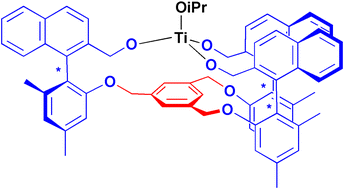Applications of chiral C3-symmetric molecules
Abstract
Throughout history symmetry and chirality have inspired artists and scientists alike. Given that rotational axes are the only elements of symmetry compatible with chirality, it is not surprising that C2- and C3-symmetrical molecules have attracted considerable attention. In recent years, the aesthetic appeal of C2-symmetrical molecules has been translated into many widely-used applications some of which are of commercial importance by its exploitation in the area of asymmetric catalysis. In contrast, exploitation of the arguably greater aesthetic appeal of C3-symmetric molecules is still in its infancy. This review, which surveys the applications of chiral C3-symmetrical molecules in the areas of asymmetric catalysis, molecular recognition and nanoarchitecture, has been designed with a view to identifying some of the most promising areas of application of these very beautiful molecules.


 Please wait while we load your content...
Please wait while we load your content...